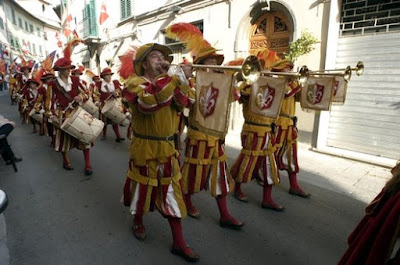One of the most-visited cities in Italy, Florence can get overcrowded in summer months. However, most visitors tend to walk the same itinerary, between Il Ponte Vecchio, Il Duomo and the Uffizi Gallery leaving the rest of the city unexplored. To avoid throngs of tourists, check out our suggestions and head to see Florence off-the-beaten-path.
 |
| Views of Florence from the Bardini Gardens |
Explore Oltrarno
Home to artisan businesses, the Oltrarno district is often overlooked by tourists. The little streets between the Ponte Vecchio and Santo Spirito are home to tiny workshops where generation after generation of artisans have been making elegant shoes, ceramics, handmade paper, prints painted by hand, Florentine-style jewellery and other little wonders. Most artisans allow visitors to watch them work. Here you can find excellent hand-made gifts to take home.
Chill out in the Giardino Bardini
While most visitors head to the Boboli Gardens, escape the crowds in the Bardini Gardens. This hidden gem offers a more intimate atmosphere with pretty grottos, colourful flower beds and spectacular views over the city. In summer, you can sip a coffee in the garden’s café and enjoy the surroundings that are so hard to come by in Florence.
Check out the Bardini Museum
A real treat for art lovers, this small quiet museum houses artworks from the Middle Ages to Renaissance collected by the famous 18th century Florentine antiquarian Stefano Bardini. Admire sculptures, fine paintings, antique furniture, ceramics, tapestries as well as stone carvings and fragments of the old centre of Florence that Bardini salvaged before its reconstruction, all that without having to elbow for space as there are fewer visitors than in the more famous city museums.
 |
| Il Ponte Vecchio in the morning |
Wake up early
The best time to see the Ponte Vecchio is at sunrise. The bridge is on everyone’s list of places to visit in Florence and a tourist trap by day but it is absolutely stunning and… empty early in the morning.
 |
| Parco delle Cascine |
Have a picnic in the park
The largest public park in the city, Parco delle Cascine sprawls over 130 hectares along the Arno river. With 19,000 trees, huge meadows and historic monuments the park has a quiet corner for everyone. Stock up on tasty goodies at the weekly farmers’ market here and relax under the trees.
Photos via Flickr by: Andreas Jungherr, Nadia Fondelli, Francesco Maiorano.















